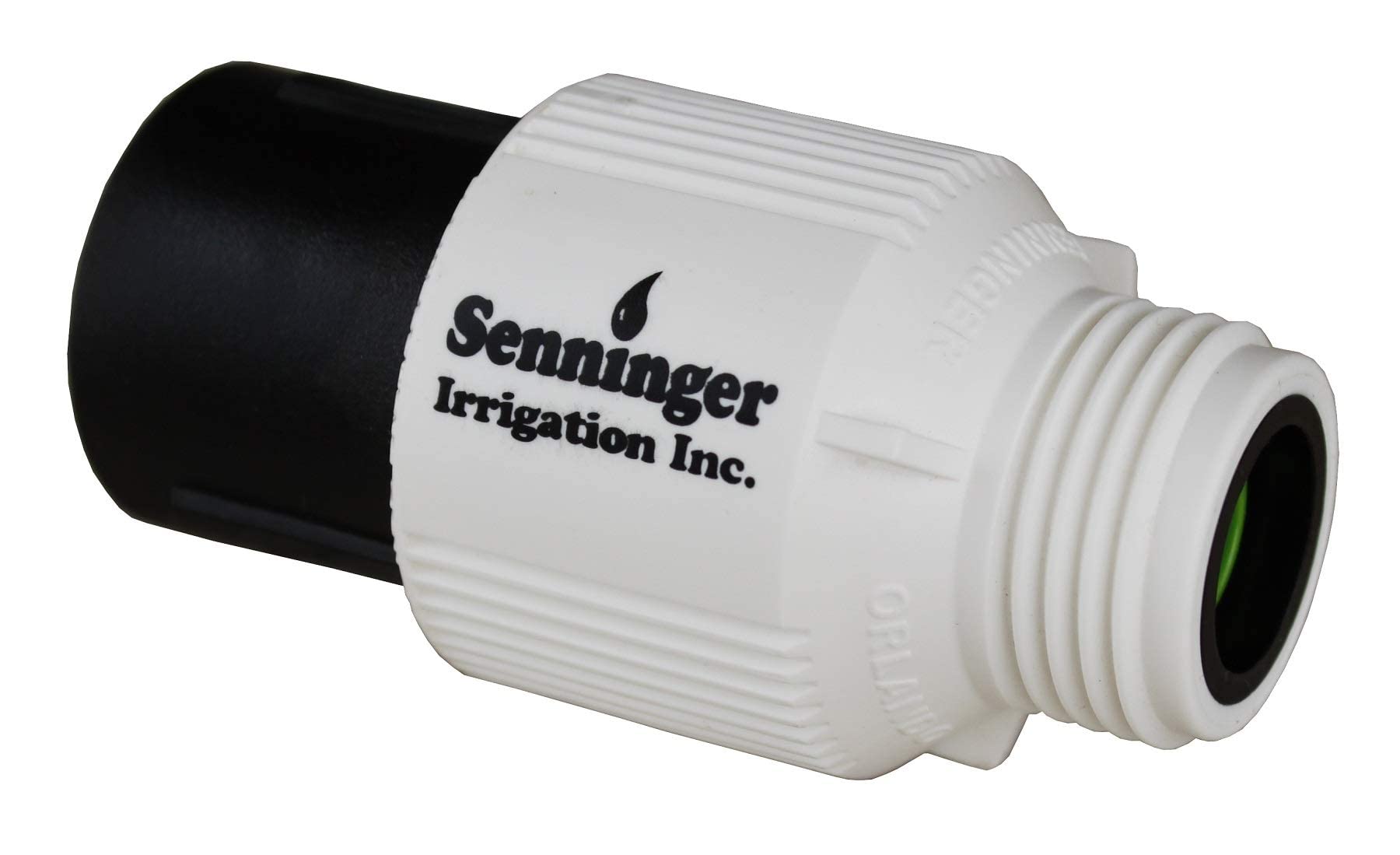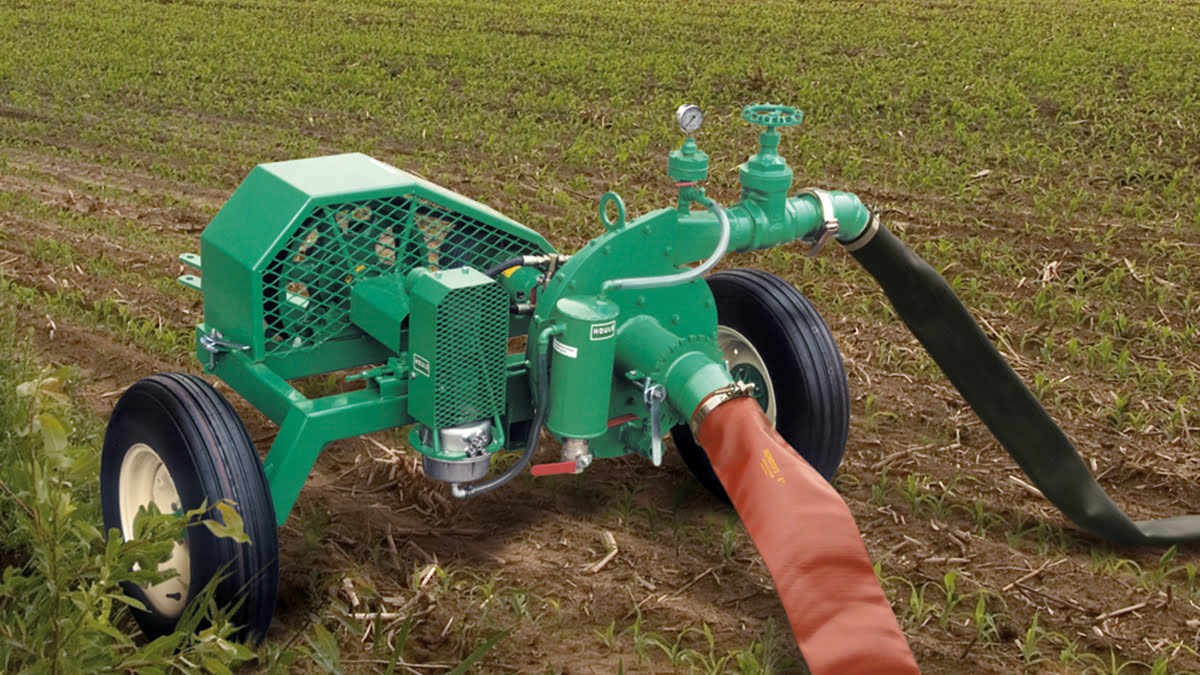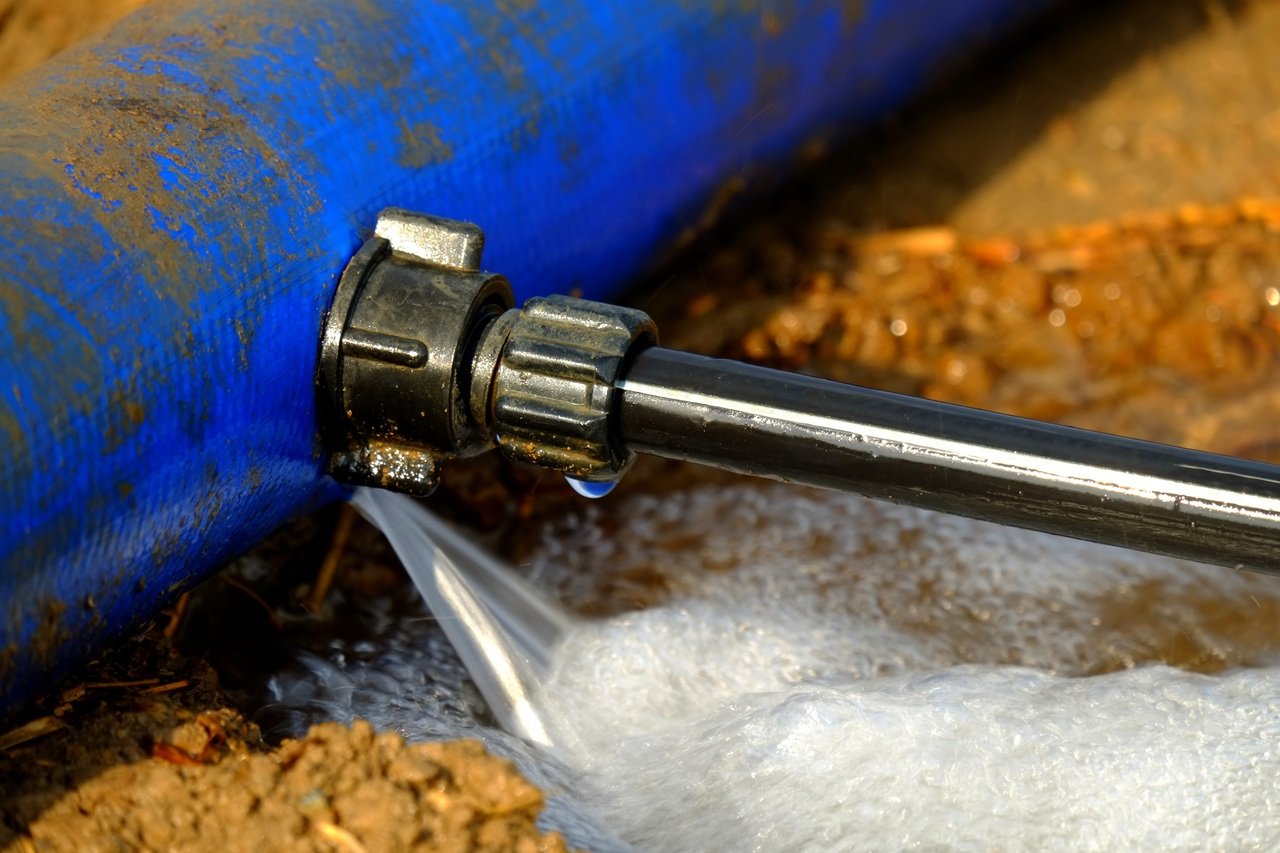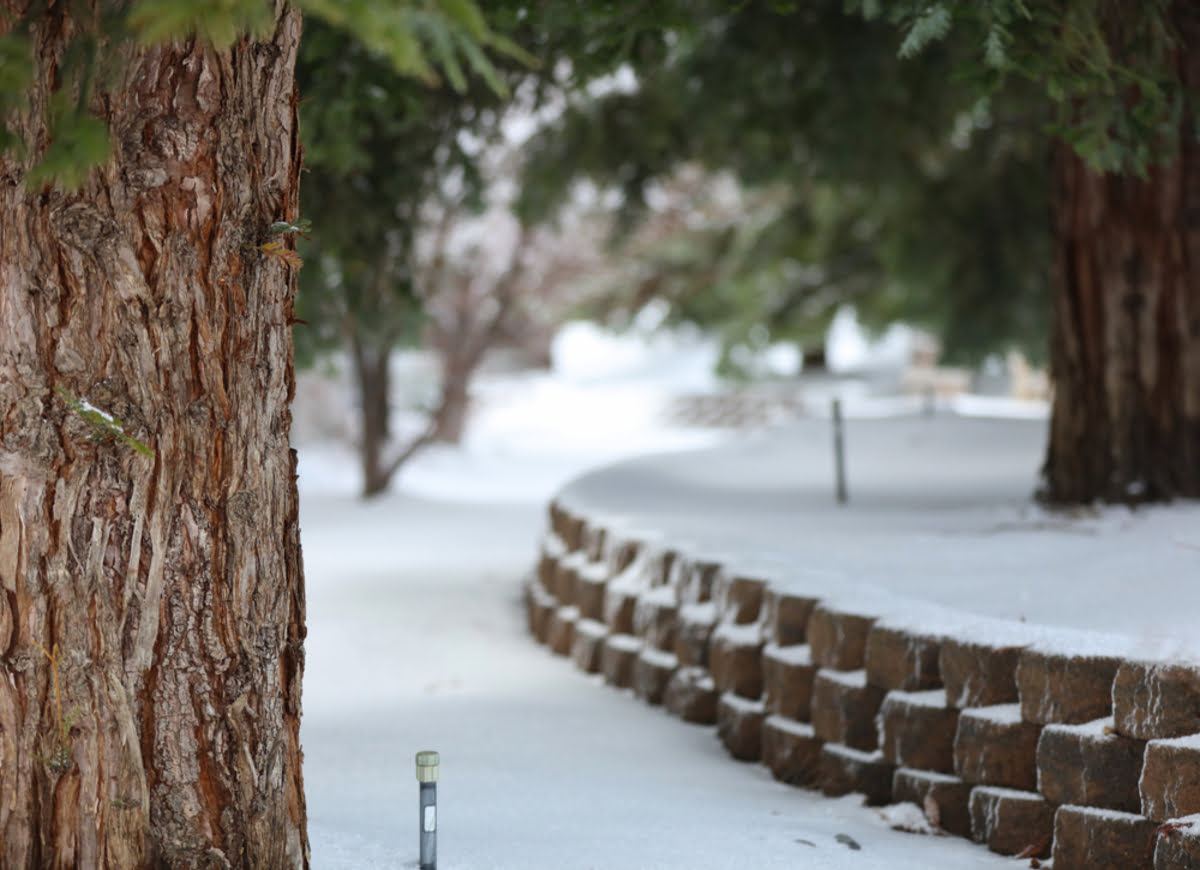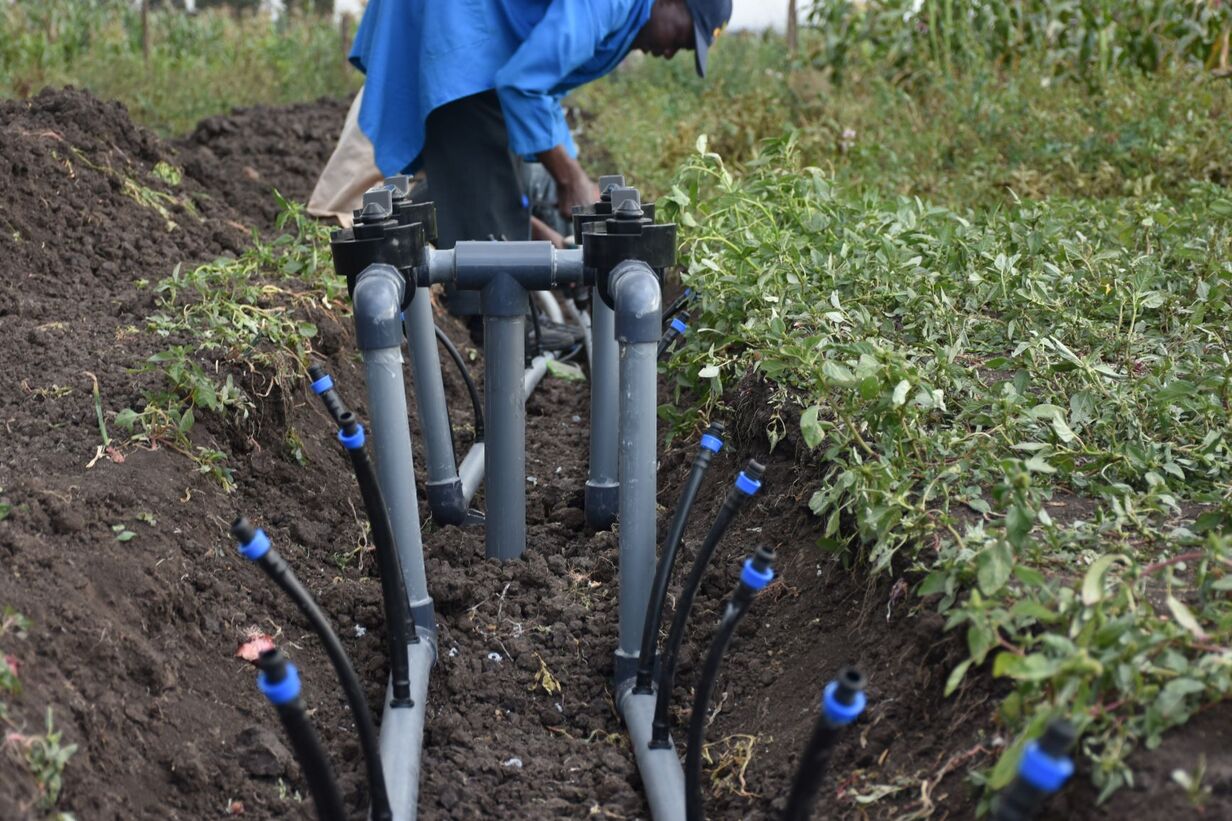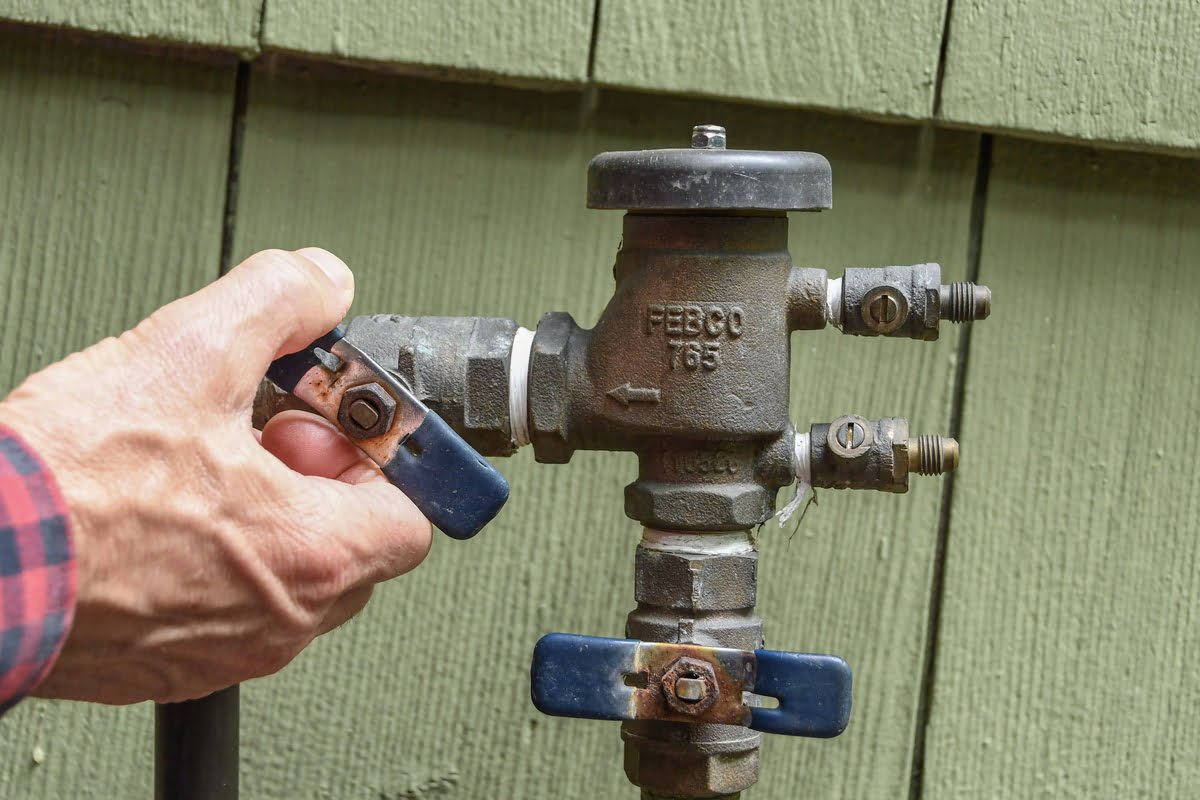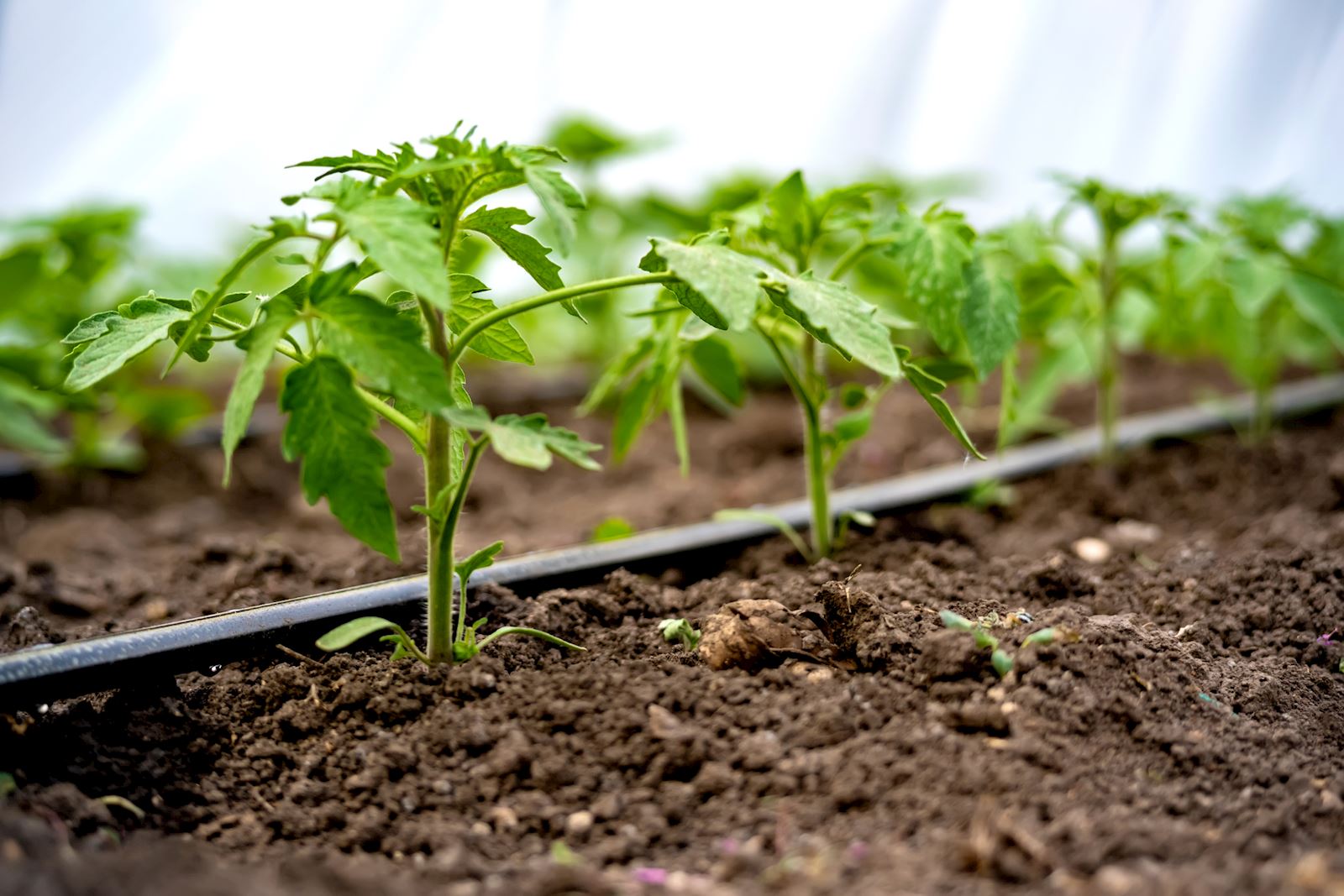Home>Gardening Tips and Tricks>Problem Solving>How To Increase Pressure In Irrigation System
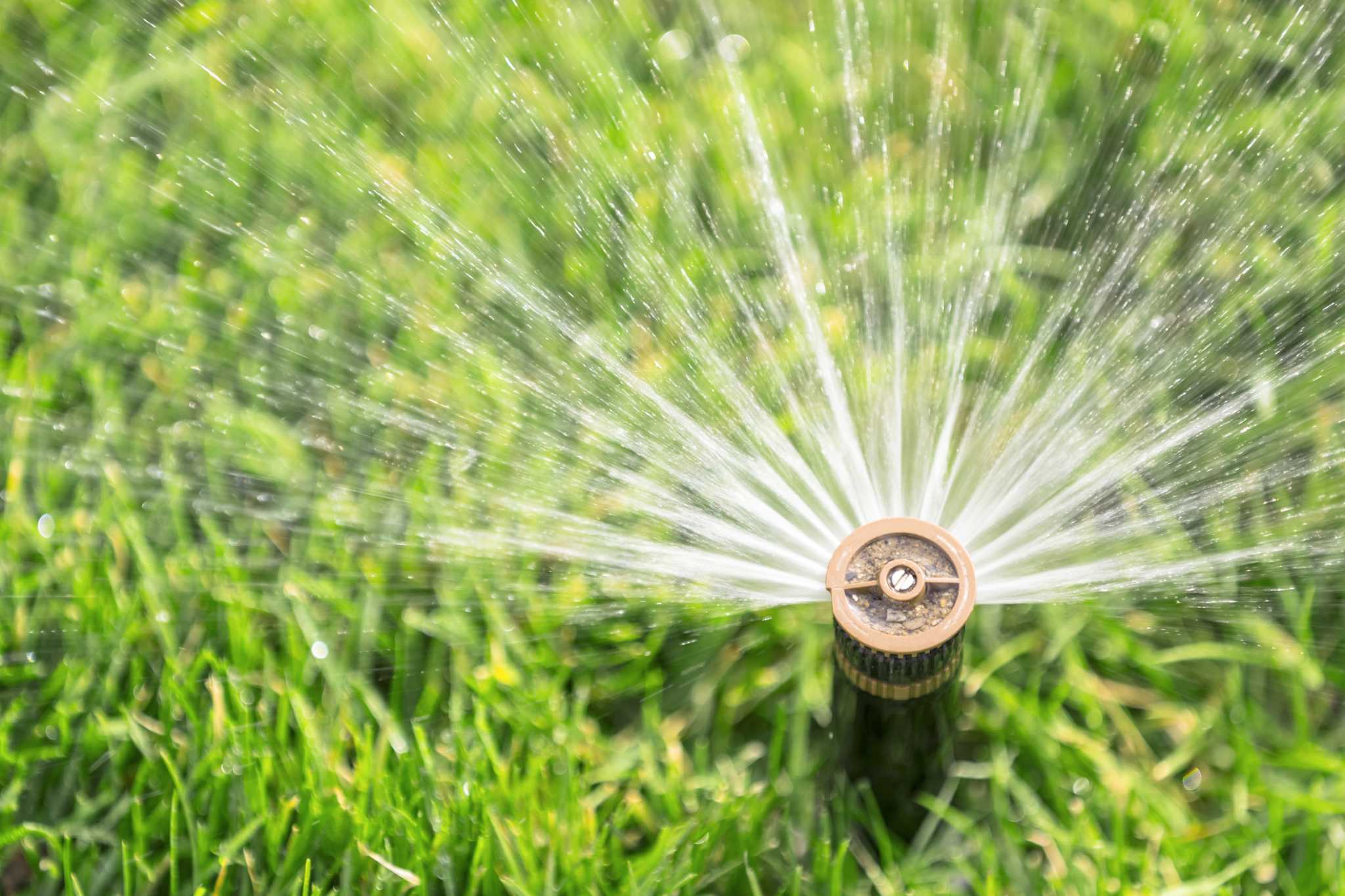

Problem Solving
How To Increase Pressure In Irrigation System
Published: November 15, 2023
Discover effective problem-solving techniques to increase pressure in your irrigation system. Learn how to troubleshoot and fix common issues for optimal watering performance.
(Many of the links in this article redirect to a specific reviewed product. Your purchase of these products through affiliate links helps to generate commission for Chicagolandgardening.com, at no extra cost. Learn more)
Table of Contents
Introduction
Welcome to the world of irrigation systems! Whether you are a homeowner looking to maintain a lush and healthy garden or a farmer needing to irrigate acres of crops, having a reliable and efficient irrigation system is crucial. One of the key components of a successful irrigation system is maintaining the right water pressure.
In an irrigation system, water pressure refers to the force at which water flows through the pipes and sprinklers. Adequate pressure ensures that water reaches all areas of your landscape evenly, promoting healthy plant growth. However, low pressure can lead to inadequate watering, resulting in dry spots and stressed plants.
If you’re experiencing low water pressure in your irrigation system, don’t worry. In this article, we will guide you through the steps to increase pressure and get your system back in top shape. We’ll explore common causes of low pressure and provide practical solutions to help you optimize the performance of your irrigation system.
By following these steps, you can enhance the efficiency and effectiveness of your irrigation system, ensuring that your plants receive the proper amount of water they need to thrive. So, let’s dive in and discover how you can increase the pressure in your irrigation system!
Understanding Pressure in an Irrigation System
Before we delve into the solutions for increasing pressure in your irrigation system, it’s essential to understand how pressure works in this context. Pressure in an irrigation system is measured in pounds per square inch (PSI) and refers to the force exerted on the water as it travels through the pipes and sprinklers.
The pressure in your irrigation system depends on various factors, such as the water source, the elevation of your property, the size of the pipe, and the number of sprinkler heads or emitters in use. Proper pressure ensures that water is evenly distributed and reaches all areas of your landscape, providing adequate irrigation.
Low pressure in an irrigation system can be caused by several factors. One common cause is leaks in the pipes, which result in water loss and reduced pressure in the system. Another cause could be clogged filters, hindering the flow of water and decreasing pressure. Additionally, pressure regulators, which control the water pressure in the system, may need adjustment to ensure optimal performance.
Understanding the reasons behind low pressure is a crucial step in troubleshooting and increasing pressure in your irrigation system. By identifying the specific cause, you can target the appropriate solution and restore the proper water pressure throughout your system.
In the next sections, we will explore the steps you can take to increase pressure in your irrigation system. From checking for leaks to installing booster pumps, we will provide you with practical solutions that will help you maximize the efficiency and effectiveness of your irrigation system. So, let’s get started!
Common Causes of Low Pressure
Low water pressure in an irrigation system can be frustrating, but it’s important to understand the common causes so you can effectively address the issue. Here are some of the most common reasons behind low pressure in irrigation systems:
- Leaks: One of the primary culprits of low pressure is leaks in the irrigation system. Leaky pipes or fittings can result in water loss, reducing overall pressure. Inspect your system carefully for any visible signs of leaks, such as puddles or wet areas, and make any necessary repairs.
- Clogged Filters: Filters play an essential role in removing debris, sediments, and other impurities from the water before it enters the irrigation system. Over time, these filters can become clogged, hindering the flow of water and decreasing pressure. Regularly clean or replace filters to ensure consistent water flow and pressure.
- Pressure Regulator Issues: Pressure regulators help control and maintain the water pressure in the irrigation system. If the pressure regulator is not properly adjusted or malfunctioning, it can result in low pressure. Check the pressure regulator and make necessary adjustments to ensure it is operating correctly.
- Small Pipe Size: The size of the pipes in your irrigation system can also contribute to low pressure. If the pipes are too small, they can limit the flow of water and reduce pressure. Consider upgrading to larger pipes to allow for better water flow and increased pressure.
- Insufficient Water Supply: In some cases, low pressure may be a result of an inadequate water supply. Ensure that your water source can adequately meet the demands of your irrigation system. Check the water pressure from the source and consider installing a larger water meter or water storage tank if needed.
By identifying the specific cause of low pressure in your irrigation system, you can take the necessary steps to resolve the issue and restore optimal water pressure. In the following sections, we will explore various solutions that will help you increase the pressure in your irrigation system and ensure that your plants receive the water they need to thrive.
Steps to Increase Pressure in an Irrigation System
If you’re experiencing low water pressure in your irrigation system, don’t worry. There are several steps you can take to increase the pressure and optimize the performance of your system. Follow these steps to get your irrigation system back in top shape:
- Check for Leaks: Start by inspecting your irrigation system for any leaks. Look for signs of water puddles or wet areas along the pipes. If you notice any leaks, repair them promptly to prevent water loss and increase pressure throughout the system.
- Clean or Replace Filters: Clogged filters can restrict water flow and decrease pressure in your irrigation system. Regularly clean or replace filters to ensure a continuous and unobstructed flow of water. This will help maintain optimal pressure and prevent clogs that can affect the performance of your system.
- Adjust Pressure Regulator: The pressure regulator is responsible for controlling the water pressure in the irrigation system. If the pressure regulator is not properly adjusted, it can result in low pressure. Consult the manufacturer’s instructions or seek professional advice to adjust the pressure regulator to the appropriate level for your specific irrigation needs.
- Increase the Size of the Pipe: If you have a small pipe size, it may be limiting the flow of water and reducing pressure in your irrigation system. Consider upgrading to larger pipes to allow for better water flow and increased pressure. Consult with a professional to determine the right pipe size for your specific requirements.
- Install a Booster Pump: If all else fails, installing a booster pump is an effective solution to increase water pressure in your irrigation system. A booster pump can enhance the water flow and ensure adequate pressure throughout your system, especially if you have a large area to irrigate. Consult a professional to assess your needs and install the appropriate booster pump for your irrigation system.
By following these steps, you can address the common causes of low pressure in your irrigation system and increase water flow and pressure. However, it’s important to remember that every system is unique, and it’s advisable to consult with a professional if you encounter any challenges when increasing the pressure in your system.
Now that you’re equipped with the knowledge of how to boost the pressure in your irrigation system, you can ensure that your plants receive the optimal amount of water they need to thrive and flourish.
Check for Leaks
When dealing with low water pressure in your irrigation system, the first step is to check for leaks. Leaks can be a major cause of reduced pressure as they result in water loss and hinder the flow of water through the system.
To identify leaks, inspect your irrigation system thoroughly. Look for any visible signs of water leakage such as wet spots, puddles, or damp areas along the pipes. You may also notice areas where vegetation is greener or more watered compared to other parts of your landscape.
If you find any leaks, it’s crucial to repair them promptly. Begin by turning off the water supply to the irrigation system. Then, using a pipe cutter or hacksaw, carefully cut out the damaged section of the pipe. Make sure to remove any burrs or rough edges with a file or sandpaper.
Next, use PVC primer and glue to attach a new section of pipe, ensuring a tight and secure connection. Follow the manufacturer’s instructions for applying the primer and glue correctly. Allow the glue to dry completely before turning the water supply back on.
It’s important to note that not all leaks may be visible. Some leaks may occur underground or within the pipe fittings. In such cases, you may need to enlist the help of a professional leak detection service. They will use specialized tools and techniques to detect leaks without causing damage to your landscape.
Regularly inspecting your irrigation system for leaks and promptly addressing them not only helps increase water pressure but also conserves water and minimizes potential damage to your property.
Once you have checked for leaks and made the necessary repairs, move on to the next step to further improve the pressure in your irrigation system.
Clean or Replace Filters
Clogged filters can significantly affect the water flow and pressure in your irrigation system. Over time, debris, sediments, and other particles can accumulate in the filters, obstructing the flow of water and reducing overall pressure. Therefore, it’s important to regularly clean or replace these filters to maintain optimum performance.
Start by locating the filters in your system. They are typically found at key points such as the water source connection, sprinkler heads, or emitters. Common types of filters include screen filters, disc filters, and media filters, each with their own filtration capabilities and cleaning methods.
If you have screen filters, carefully remove them and wash away the accumulated debris under running water. Use a soft brush or toothbrush to scrub away stubborn particles. For disc or media filters, refer to the manufacturer’s instructions for the recommended cleaning procedure.
In some cases, the filters may be too clogged or damaged to be effectively cleaned. In such instances, it’s best to replace them with new filters. Consult with your local irrigation supply store or professional to ensure you select the appropriate filter for your specific irrigation system.
Regular maintenance of filters is key to ensuring the longevity and efficiency of your irrigation system. By keeping the filters clean and free from debris, you’ll maintain consistent water flow and pressure, preventing any potential issues caused by clogs.
Once you’ve cleaned or replaced the filters, you can move on to the next step to further optimize the pressure in your irrigation system.
Adjust Pressure Regulator
The pressure regulator is a critical component of your irrigation system that helps control and maintain the water pressure. If the pressure regulator is not properly adjusted, it can lead to low water pressure throughout the system. Therefore, it’s important to check and, if necessary, adjust the pressure regulator to ensure optimal performance.
Locate the pressure regulator, which is typically found near the water source connection or main valve of your irrigation system. The pressure regulator may have a manual adjustment screw or a control knob that allows you to modify the water pressure output.
To adjust the pressure regulator, start by turning off the water supply to the irrigation system. Using a wrench or pliers, loosen the lock nut or screw that secures the pressure regulator. Then, carefully turn the adjustment screw clockwise to increase the pressure or counterclockwise to decrease it. Make small adjustments and test the pressure as you go to find the optimal setting for your specific needs.
It’s important to note that the ideal pressure setting may vary based on factors such as the size of your irrigation system, the type of sprinklers or emitters used, and the water requirements of your plants. Consult the manufacturer’s guidelines or seek professional advice for the recommended pressure range for your specific system.
Once you’ve adjusted the pressure regulator, tighten the lock nut or screw to secure it in place. Turn on the water supply and check the pressure using a pressure gauge or by observing the performance of the sprinklers or emitters.
Properly adjusting the pressure regulator ensures that your irrigation system operates at the optimal pressure, enabling efficient and effective water distribution. With the pressure regulator correctly set, you can move on to the next step to further optimize the pressure in your irrigation system.
Increase the Size of the Pipe
The size of the pipes in your irrigation system plays a crucial role in maintaining adequate water pressure. If you have a small pipe size, it can restrict the flow of water and decrease pressure. Increasing the size of the pipes can help improve water flow and boost the overall pressure in your irrigation system.
To determine if you need to increase the size of the pipe, consider factors such as the length of the irrigation system, the number of sprinkler heads or emitters, and the flow rate required for proper irrigation. In general, larger pipe sizes allow for better water flow and reduce the chances of pressure loss due to friction.
If you decide to upgrade the pipe size, it’s crucial to consult with an irrigation professional or a knowledgeable supplier. They can help you calculate the required pipe size based on your specific system requirements and site conditions.
When increasing the size of the pipe, it’s essential to replace the entire length of the pipe affected, as well as any associated fittings. This ensures a continuous and smooth flow of water throughout the system.
Before making any modifications, it’s important to turn off the water supply to the irrigation system. Carefully cut out the existing section of the pipe using a pipe cutter or hacksaw, ensuring clean and even cuts.
Next, measure and install the new pipe using appropriate fittings and connections. Choose pipes made from materials suitable for irrigation systems, such as PVC or polyethylene. Follow the manufacturer’s instructions for proper installation techniques and use primer and glue to ensure secure and leak-free connections.
Increasing the size of the pipe allows for improved water flow and increased pressure in your irrigation system. By ensuring that water can move more freely through the pipes, you’ll optimize the performance of your system and provide adequate irrigation to your plants.
Once you have increased the size of the pipe, you can move on to the final step to further enhance the pressure in your irrigation system.
Install a Booster Pump
If you’ve exhausted the previous steps and are still experiencing low water pressure in your irrigation system, installing a booster pump can be an effective solution. A booster pump is designed to increase water pressure and enhance the flow of water through your system.
A booster pump works by drawing water from the source and increasing its pressure before delivering it to the irrigation system. This is particularly beneficial if you have a large area to irrigate or if your water source has low pressure.
Before installing a booster pump, it’s essential to determine the appropriate pump size and capacity for your specific needs. Factors such as the size of your irrigation system, the number of sprinklers or emitters, and the desired pressure range should be considered.
Consult with a professional or an irrigation supply store to select the right booster pump for your system and obtain guidance on the installation process.
When installing the booster pump, begin by turning off the water supply to the irrigation system. Follow the manufacturer’s instructions for the proper placement and connection of the pump. Ensure that the inlet and outlet connections are secure and leak-free.
Additionally, consider installing a pressure tank alongside the booster pump. The pressure tank helps maintain a consistent water pressure by storing water under pressure, reducing the frequency of pump cycling. Consult with a professional to determine the appropriate size and placement of the pressure tank for your system.
Once the booster pump and pressure tank are installed, turn on the water supply and test the system. Monitor the pressure using a pressure gauge and adjust the pump settings as needed to achieve the desired pressure range.
By installing a booster pump, you can significantly increase the water pressure in your irrigation system, ensuring adequate water distribution and efficient irrigation.
With the booster pump in place, your irrigation system will be equipped to handle the demands of watering your plants effectively and efficiently.
Conclusion
Having adequate water pressure in your irrigation system is essential for maintaining a healthy and thriving landscape. Low water pressure can result in uneven watering, stressed plants, and inefficient water usage. However, by following these steps, you can increase the pressure in your irrigation system and optimize its performance.
Start by checking for leaks and promptly repairing any identified issues. Clogged filters can also hinder water flow, so be sure to clean or replace them regularly. Adjusting the pressure regulator can help fine-tune the water pressure to meet your specific needs. Additionally, consider increasing the size of the pipes to improve water flow and installing a booster pump if necessary for enhanced pressure.
Remember, each irrigation system is unique, and it’s important to assess your specific requirements and consult professionals when needed. By implementing these solutions, you can ensure that your irrigation system delivers adequate water pressure to every part of your landscape, promoting healthy plant growth and minimizing water waste.
Regular maintenance and monitoring of your irrigation system will help maintain optimal pressure and keep your system in top shape. By troubleshooting and taking proactive measures, you can enjoy the benefits of a well-functioning irrigation system for years to come.
So, take the necessary steps to increase pressure in your irrigation system and watch your plants flourish with the right amount of water they deserve!
